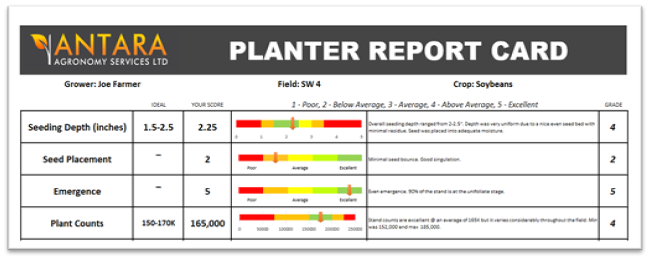
I was at a customer field this spring performing a routine planter check looking at soil conditions and seed placement. The soybean seed was nicely placed in the bottom of the furrow at a depth of 1” to 1.25” depth in good moisture. I was at the end of the field poking around, so the producer stopped at the end of the row to chat and see what I thought of the job he was doing. Digging for seed near the headland we could not find any. We dug some more and discovered that the GPS was shutting the planter off about 10ft early as he crossed over areas already planted.
Somewhere over winter the settings in his control screen were lost or changed after an upgrade. Whether it was his dealer saying it should be ready to go or the producer neglecting to double check, this just goes to serve as a reminder how important it is to have boots on the ground checking behind the planter and check often.
With a short growing season, you only get one chance at getting it right the first time if you want to get your full yield potential. Reseeding is not only an added cost; it also usually comes with a yield penalty. A high percentage of your yield potential depends on a good start.
As agronomy consultant Phil Needham says “half sown = half grown”
So although the client was mad that he now had to fix all these misses across multiple fields, he was very happy to have uncovered the problem early, vs two weeks later, after the crop had emerged and it was too late to do anything about it.
There are many different factors that a farmer should be watching in the spring to ensure the crop gets the best start. Once the crop has emerged, we look at 9 different factors when assessing performance at planting which we summarize in a report card. Aside from a few of the obvious metrics like planting depth and seed placement, here is a list of other factors producers will want to assess:
- Emergence – Is emergence uniform?
- Plant stand counts – What is your emergence percentage?
- Seed Bed Integrity –Is the seed placed in nice, mellow, soil for good contact?
- Residue Management – Is there residue preventing good seed to soil contact?
- Crop Rotation – Is there enough diversity in the rotation?
- Soil moisture – Is there enough moisture everywhere to promote even germination?
- Pest Pressure – Are there signs of early season pest pressure that can affect yield potential?

Routine planter visits are just one of the ways a professional agronomist can help you in your operation. At Antara we know the importance of the planting season. Our spring planting visits, and report cards help our clients learn how to optimize their seeding operations so they can capture every bushel Mother Nature offers them.









